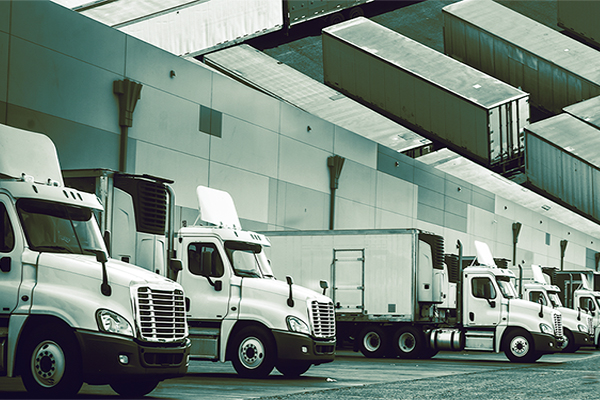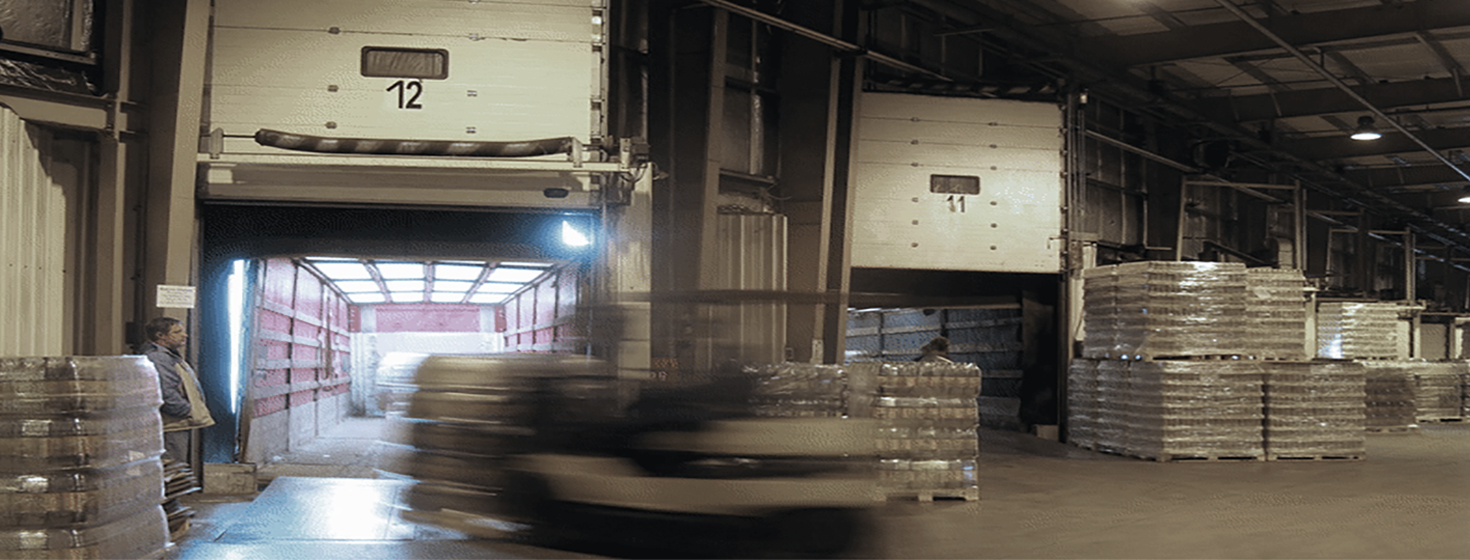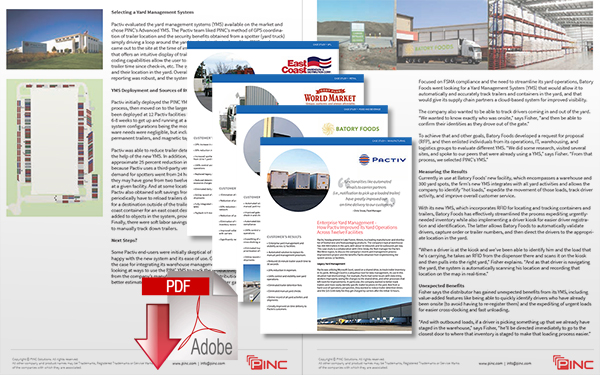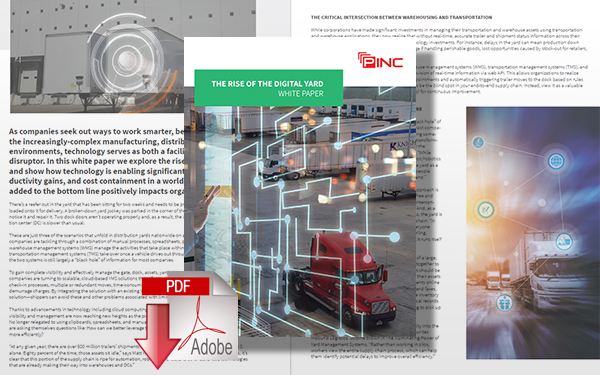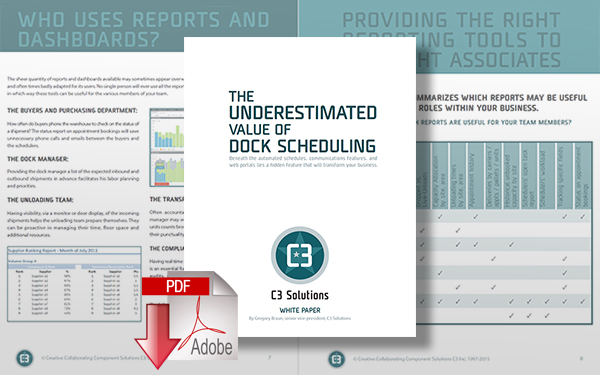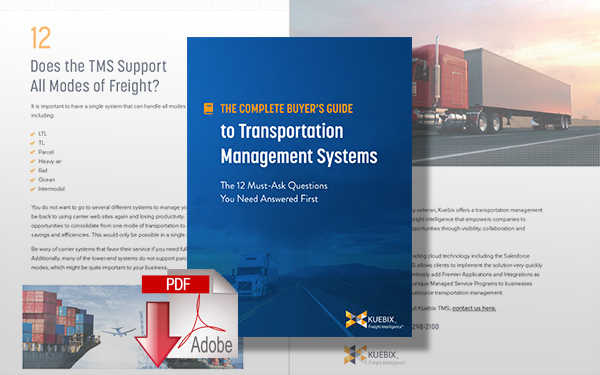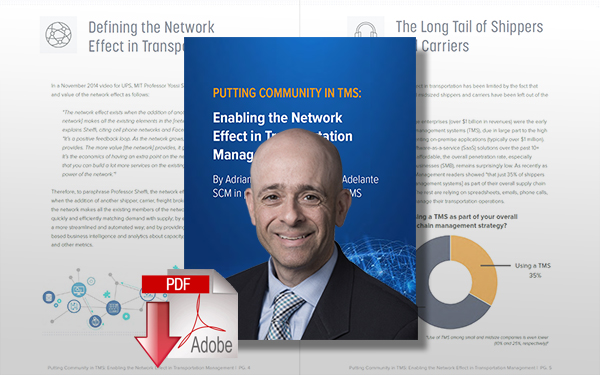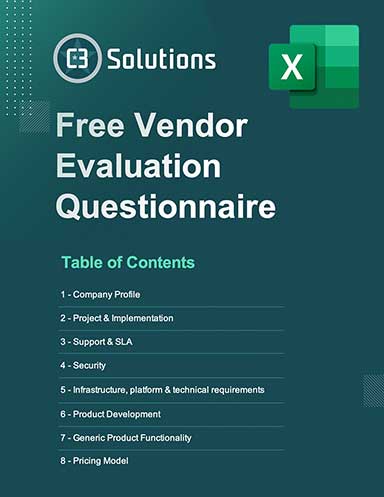Using Yard Management Systems to Close Supply Chain Gaps

A point in the supply chain where two worlds collide, and where driver safety issues can germinate, the yard deserves more attention as more companies look to streamline their warehousing activities on the way to becoming a “shipper of choice.”
The “Black Hole” of the Supply Chain
Poor visibility in the warehouse and distributing center (DC) yard isn’t anything new.
In fact, it’s so prevalent that analysts and technology vendors have taken to calling the yard the “black hole” of the supply chain.
Where companies will invest in warehouse management systems (WMS) to run the activities taking place within their four walls, and then complement those platforms with transportation management systems (TMS) to manage freight movement, the staging area where goods are shipped and received is often left to its own devices.
“The yard is still an area that not too many people are bothered about,” says Bart De Muynck, Gartner’s research vice president for transportation technology.
“In fact, companies seem to be doing well by not doing anything out in their yards. In other words, they’re sticking with the status quo and it’s working, so why change it? However, we’re seeing a little bit of progress in this area in terms of technology adoption, but it’s still early.”
Some of that progress is being driven by directives like the hours-of-service (HOS) regulations, which dictate how many hours a driver can be behind the wheel and how much time he or she needs to rest in between shifts.
Administered by the Federal Motor Carrier Safety Administration (FMCSA), HOS governs the number of working hours for anyone who operates a commercial motor vehicle in the United States.
Waiting around for a dock door to be available or for a shipment to be loaded onto a truck, for example, can derail a transportation plan due to a driver being placed out of commission.
No More Black Holes
Another trend pushing more companies to look at their yards is the “shipper-of-choice” movement, whereby organizations work to position themselves in a favorable light in the eyes of their carriers.
Originally spurred on by a lack of trucking capacity, this movement finds companies doing more to speed up truck turnaround times, avoid demurrage fees and find new ways to accommodate drivers while they’re on-site (e.g., comfortable rest areas, shower facilities, etc.).
Ultimately, the idea is that carriers will want to work with shippers that turn around their vehicles the fastest - a goal that yard management systems (YMS) support - and treat their drivers well.
De Muynck says that technology vendors are also helping to push more shippers to view their yards as supply chain assets versus “black holes.” By integrating YMS capabilities into WMS and TMS, for example, companies like SAP, Oracle, and Blue Yonder are putting at least some level of yard management into their users’ hands.
So, where companies like PINC and C3 Solutions continue their reign on the best-of-breed side, larger vendors are also weaving what De Muynck refers to as “lite capabilities” like appointment scheduling into their overall solutions.
“Some companies actually have very interesting capabilities meant to improve shippers’ yard operations,” adds De Muynck, pointing to Kuebix (recently acquired by Trimble) and Supplystack as two of the newer frontrunners in the yard management area.
“They’re offering solutions focused around creating better appointment scheduling, dock slotting and other capabilities that help shippers and carriers work together.”
Organizing the Chaos of Managing a High-Volume DC
A global chemical company that was founded in 2015 as a spinoff from DuPont, The Chemours Company manufactures performance chemicals that are used by the oil refinery, agricultural, automotive, energy, and consumer electronics industries.
Headquartered in Wilmington, Del., Chemours runs a massive logistics operation that spans 63 global warehouses and 47 contract manufacturing locations. Utilizing trucks, rail, iso-tanks, ocean freight, and air freight, the company’s warehouses are bustling with activity around the clock, according to Paul Day, global category manager for warehouse and airfreight.
Making the Switch
When Day joined the company in 2017, it didn’t take long for him to identify a number of redundant, manual processes being used to manage equipment. “In my first 100 days with the organization, I traveled around the world and saw 40% of the largest volume warehouses,” he recalls.
“While we have some very intelligent engineers that are great at what they do, we struggled with some of the logistical and supply chain issues, including having a single source of truth.”
Armed with 30 years of logistics experience, Day just happened to know a thing or two about yard management. Starting with Chemours’ Pass Christian, Miss., plant, which was running its yard with spreadsheets and a lot of manual labor, Day investigated about 10 different types of YMS before selecting PINC YMS for an initial implementation at the location.
“I whittled my list down to about four providers and then had our internal indirect buying group help map out our project scope,” Day explains. “PINC won the bid by providing the biggest benefit for us.”
Racking Up the Wins
Since implementing the YMS in 2018, Chemours has reduced detention and demurrage to the tune of about $1.5 million (for both ocean and truckload). Using its YMS, Chemours is now maintaining and managing its equipment needs in almost real-time. It has visibility over its trailers and carriers and knows exactly how many assets are empty and where they’re located.
With one source of truth to work from and a less congested yard, the company has also been able to improve its throughput with visibility across six total yards. “Our YMS organized the chaos of managing a high-volume distribution center,” says Day.
In 2019, Chemours rolled out the YMS at its New Johnsonville, Tenn., location and experienced similar successes. Now, it wants to replicate those “wins” at some of its other high-volume locations. To other logistics managers who want to streamline and optimize their yards, Day says a good first step is to look at the potential return on investment, with a focus on cost savings, the elimination of waste and fewer redundancies.
“The PINC project management methodology helped us look at our ‘as-is,’ compare notes with other companies that have done this before, and then pick and choose what option best suited us,” says Day. “For us, PINC yard management was a slam dunk…a no-brainer.”
Is “Good Enough” Ever Enough?
Pressured to improve their fulfillment and transportation operations in order to meet the rigors of e-commerce and changing consumer demands, companies are investing in the software and automation that helps their supply chains run smoothly and profitably. The yard isn’t generally a part of that conversation.
“Most yards run pretty well, so there’s no real burning issue to push companies to invest in YMS,” says Joe Vernon, Capgemini’s practice leader, supply chain analytics.
That doesn’t mean companies can afford to stick with this “good enough” approach to yard management. In fact, Vernon says adding automation, sensors and other advanced technologies in the yard can substantially improve those operations.
For instance, driver check-in processes and vehicular movement in the yard can both be made more fluid using technology. The technology also puts predictive analytics and real-time decision-making into the hands of companies that previously lacked these capabilities.
“All supply chain organizations are talking about automation, robotic process automation [RPA], and artificial intelligence [AI] right now,” says Vernon.
“This will eventually spill over into yard management, as well. There will be a natural timing around the feeling that there’s a ‘need’ for those tools, and then more shippers will want to get on board.”
The Yard: Where Warehousing and Transportation Collide
Solving Critical Problems
Fundamentally, De Muynck says YMS helps solve one of the most pressing supply chain challenges for any shipper: just how efficiently carriers and other parties are using the time clock. This is particularly important in a HOS world, where drivers are limited in terms of how much time they can spend behind the wheel.
Drivers also have to conduct pre- and post-inspections; take breaks; factor in traffic-related delays, and stay safe. The latter is particularly critical in a job where the FMCSA says that every 15 minutes of extra “dwell time” increases the potential for crash rates by 6.2%.
“Imagine the implications of a driver having to stay at a location for an extra three hours,” says De Muynck, noting that this would literally create a 75% increase in the expected crash rate.
“Truck driving is a profession that causes a high number of driver fatalities,” he adds, “many of which could be happening as a result of detention in the yard.”
Where Two Worlds Collide
With more warehouse and DC operators funneling money into technology and automation that helps their operations run more smoothly, De Muynck says that more of them should be factoring YMS into those strategies.
“Shippers are spending millions of dollars - and in some cases, tens and hundreds of millions of dollars - automating their warehouses,” says De Muynck.
“Companies are also spending a lot of money on TMS with the goal of making transportation more efficient, but then their yards just fall flat. The problem is that the yard is where those two worlds - warehousing and transportation - collide.”
Looking ahead, Vernon sees touch screens, mobile apps, sensors, and real-time dashboards become more of a priority out in the yard, where clipboards, phones, and spreadsheets still serve as the dominant management tools. Sensors installed at the gate can track vehicular movement, aerial drones can track inventory, and additional sensors can be used to determine just how fast - or slow - a truck is being unloaded.
Read: Employing Automation Technology for a More Efficient Digital Yard Management Process
“Companies already using these technologies in their yards are gaining better visibility and predictive capabilities, and then using that data for better dock scheduling and appointment slotting,” Vernon concludes.
“Going forward, I would hope to see more companies taking advantage of moving up into machine learning, RPA, and predictive analytics to help drive that movement even further.”
Related Article: Using Inventory Accuracy and Yard Automation to Fight the COVID-19 Chaos
Related Resources
PINC Yard Management Systems: 4 Case Studies
In these 4 Yard Management System case studies, we detail how Pactiv, Batory Foods, Cost Plus Worl Market, and East Coast Warehouse & Distribution Corp. implemented PINC's Yard Management solutions to increase productivity, reduce expenses, eliminated trailer detention fees, and maintain control and visibility over yard operations, and more. Download Now!
The Rise of the Digital Yard
In this white paper, we explore the rise of the digital yard and show how technology is enabling significant efficiencies, productivity gains, and cost containment in a world where every penny added to the bottom line positively impacts organizational success. Download Now!
More Resources from PINC
Everything You Need Know About Buying a Dock Appointment Scheduling System
This practical guide provides real-world best practices for selecting and implementing a Dock Scheduling System. Download Now!
The Underestimated Value of Dock Scheduling
Beneath the automated schedules, communications features, and web portals lies a hidden feature that will transform your business. Download Now!
More Resources from C3 Solutions
The Complete Buyer’s Guide to Transportation Management Systems
There is almost no limit to how a Transportation Management System can benefit your unique supply chain, the key to success is finding the right TMS for your goals, so before selecting a TMS, use the 12 questions in this buyer’s guide to finding the best solution for your company. Download Now!
Putting Community in TMS: Enabling the Network Effect in Transportation Management
In this eBook, Adrian Gonzalez, President, Adelante SCM in partnership with Kuebix TMS, describes how transportation management systems are transitioning from being “inside the four walls” applications to becoming operating systems that power transportation communities and enable network effects. Download Now!
More Resources from Kuebix
Article Topics
C3 Solutions News & Resources
Efficient Automation Can Significantly Increase Warehouse Productivity C3 Solutions Major Trends for Yard and Dock Management in 2024 Replace Your Antiquated Spreadsheets with C3 Solutions’ Cloud Based Software Adapting to New Realities Shaping the Next-Gen Grocery Shopping Experience The Shipper’s Handbook to Managing Expectations This Holiday Season Dock Scheduling Allows Food Distributor to Avoid Detention Charges The Dynamic Grocery Market More C3 SolutionsLatest in Transportation
Is There a Next Generation of Truckers? Data Reveals Grim Outlook A Look at Baltimore’s Key Bridge Collapse—One Month Later Baltimore Continues Bridge Recovery With Opening of New Channel How Shippers Can Prep for Hurricane Season UPS Struggles in First Quarter With Steep Earnings Decline FedEx Announces Plans to Shut Down Four Facilities The Two Most Important Factors in Last-Mile Delivery More TransportationAbout the Author
